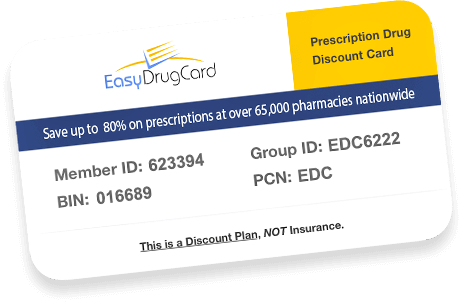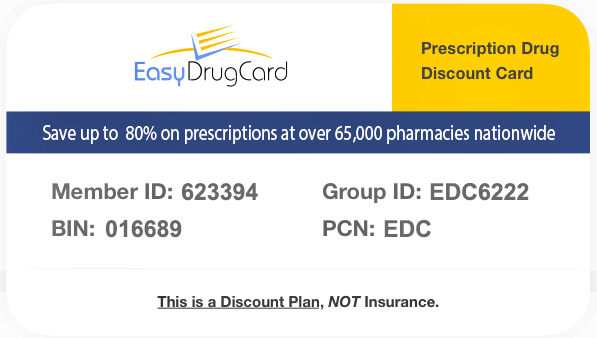Elimination Diet
Last week I explained the differences between true food allergies and food sensitivity/intolerance. I promised to provide you with a sample elimination of gluten, eggs, and dairy. The reason why I’m choosing these three foods is that, in my practice, I find them to be the most problematic for my patients. This type of diet is not a “fad” diet and does not focus on caloric restriction. The purpose is solely to identify foods that illicit an inflammatory response in your body and cause adverse reactions.
Before starting the elimination of these food items, it is important to do your research and make sure that you are familiar with all sources of the eliminated foods. This will require being extremely diligent about ingredient label reading. Ideally, the consumption of foods that actually have an ingredient list should be few and far between.
Here are some common and hidden sources of the eliminated foods:
Gluten
– Wheat, Barley, Rye, Spelt, Farro, Couscous
– Most baked goods (breads, cookies, pastries, cereal) unless marked gluten free
– Noodles, crackers, chips, cereal, granola bars unless marked gluten free
– Soy sauce, seasoning blends, canned soup
– Pre-made mixes, frozen meals, some candies
– Anything fried, battered, tempura, even French fries
– Medicine (tablets)
Eggs
– salad dressing
– egg substitutes
– noodles
– baked goods (regular and gluten free)
– pretzels
– canned soups
– commercially made meatloaf and meatballs
– watch for : albumin, globulin, lecithin, livetin, lysozyme, vitellin, and words that begin with “ova” or “ovo” (Ex: ovalbumin)
Dairy
– milk, yogurt, cheese
– pre-made pancake and other mixes
– frostings
– chocolate and other candy
– salad dressings
– canned soups
– protein bars and protein powder
– Casein, Whey, Milk Powder
– Medicine (tablets)
These are not exclusive lists, so again, read labels thoroughly. Remember, an elimination diet is supposed to identify food sources of inflammation. This means that while eliminating potential trigger foods, you also want to eliminate foods that are inflammatory in nature. This includes most processed foods, refined carbohydrates and sugars (candy, soda, potato chips..need I go on?).
Before you begin any elimination diet, make sure that you have plenty of foods available that you can eat. I do recommend donating your gluten, dairy, and egg-filled foods to the food bank, neighbor, or co-worker. If you live with others who are not going through the elimination diet with you, ask if they would be willing to keep tempting foods in a special drawer or section of the refrigerator. This will make it easier for you to stick to the plan. It’s also essential that you have quick, safe options around. This will ensure that in moments of weakness, you’ll have healthy choices to grab.

Tips for the Elimination Diet
Here is a sample day without gluten, dairy or eggs.
Sample Day 1
Breakfast Overnight Protein Oats –Adapted from Nutritionist in the Kitch
If you’re feeling ambitious, make several while you have all of the ingredients out so that you have a grab-n-go breakfast all week.
Serves 1
– ½ cup certified gluten free whole rolled oats
– ½ scoop- 1 full scoop vegan protein powder (vanilla or chocolate)
– 1 tbsp chia seeds
– 1 tbsp almond butter
– ¾ cup unsweetened vanilla non-dairy milk (you might need to add more milk if you use the
full scoop of protein)
– Mix-ins: (1 tbsp each) sliced almonds, dried fruit, unsweetened coconut, fresh fruit (have
more than 1 tbsp)
– 1 tbsp maple syrup (optional—most protein powder is sweet enough)
1. In a bowl or jar add the oats, chia seeds, protein powder and almond milk. Mix well to combine.
2. Place the jar in the fridge and leave overnight.
3. In the morning, before eating, stir in the almond butter and other mix-ins.
4. Drizzle with a little pure maple syrup if you choose.
5. Dig in!
Lunch Hearty Salad (Save yourself time and pre-assemble the dry ingredients in zip-lock bags on a Sunday). Grab throughout the week, add protein and dressing. Shake it up to mix and pour it onto a plate when you get to work!
– This can be as basic or extravagant as you’d like.
– Protein:
o Chicken: rotisserie chicken from the grocery store, leftover chicken breast or even all natural deli-chicken slices.
o Turkey: breast, deli slices or ground
o Salmon: grilled, baked, even canned works
o Tuna: canned, ahi, etc.
o Any other grilled or baked fish
o Beef: leftover steak, ground taco meat
o Beans/Lentils/Legumes
– Complex carb (1/4 – ½ cup)
o beans of choice (black, pinto, garbanzo, kidney, etc.)
o gluten free grain: wild/black/brown rice, quinoa, millet, amaranth
o roasted potato (red, purple, russet, or sweet potato)
– Dressing
o Naked (just the fresh flavors of the ingredients)
o Sea salt and fresh lemon
o Olive oil and vinegar
o Salsa (picante, pico de gallo, tomatillo salsa)
o If you purchase a commercial dressing READ the label!
– Healthy fat:
o ½ sliced avocado
o 2 tbsp nuts/seeds/hemp hearts
– Other veggies: cucumber, tomato, artichoke, radishes, carrots, beets, broccoli, green onion, etc.
Dinner Cilantro and Green Onion Pork Burger
with Baked Sweet Potato Wedges
Serve with large salad or grilled veggies
Sample Day 2:
Breakfast: Banana Almond Meal Muffin from The Minimalist Baker
Smoky Maple Sage Breakfast Sausage from The Curious Coconut (Feel free to sub
ground turkey or any ground meat for the pork. Blends work well too!)
Lunch: Turkey Hummus Wrap
- 4ounces nitrate-free deli turkey
- 2 Large Romaine Lettuce Leaves
- 2 Tbsp hummus
- 2 Tbsp sliced black olives
- 1/2 medium avocado, sliced
- Fresh or roasted bell pepper
- Cucumber very thinly sliced
- Spread 1 Tbsp hummus on each lettuce leaf, then add ¼ of the avocado to each, 1 Tbsp olives, peppers and finally 2 oz of turkey on each. Add any additional veggies and serve with 1ounce Gluten Free Crackers (such as Mary’s Gone Crackers), crunchy veggies and 2 tbsp additional hummus for dipping.
Dinner: Slow Cooker Tomatillo Pork Chili Verde from Paleomg.com
Serve with steamed rice and sliced avocado
To avoid the temptation of grabbing a food item that will hold you back, here are some ideas to keep you satisfied on the go:
Quick and easy snacks for the road or home
– Cinnamon rice cake: top with 1 tbsp almond butter, sprinkle with additional cinnamon if you’d like!
– Turkey roll ups- Wrap 2-3 slices of turkey in 1 large romaine lettuce leaf. Add 1 tbsp hummus, guacamole, salsa or 1 tsp mustard for flavor.
– Apple and cashew butter
– Ants on a log: Who ever got tired of this childhood staple? Sub sunflower seed butter for peanut butter and top with craisins for a tart twist.
– Small handful of almonds with 1 tsp dried fruit
– 1 once low sugar jerky with 1 cup crunchy veggie
– 1 cup sliced peppers and cucumber with ¼ cup hummus
– Sliced Jicama sprinkled with sea salt, paprika and a little cayenne pepper. Serve with ¼ cup guacamole.
- After the 4-6 week period of avoiding the suspected problematic foods (gluten, eggs, dairy) you can begin to re-introduce one at a time. The Institute of Function Medicine suggests re-introducing whichever food item you miss the most.
- Eat that food 2-3 times within the day while continuing to eat the other “safe” foods from the Keep a food/symptoms journal and during that day, and the next record any symptoms. The symptoms might present as nasal or throat congestion, headache, extreme fatigue, muscle or joint pain, diarrhea, gas, bloating, stomach pain, etc.
- If you don’t experience any reaction to the food during this two-day period, you may continue to consume that food and reintroduce a second food in the same manner (introduce the food on Day 3 and watch for any symptoms on Day 3 and Day 4). If no reaction, keep that food in the diet and add the third food and so on.
- When you decide to re-introduce egg, I would start with the yolk, as that tends to be better tolerated than the white. (Ex: scrambled egg yolks or mashed hardboiled egg yolk on toast with avocado). If during the two-day period you don’t experience any adverse reactions to the yolk, proceed with the full egg. For dairy, I would suggest beginning with cheese or yogurt, which contain less lactose, before drinking a full glass of milk.
These are purely guidelines.
During this time, it is important to consume a variety of protein sources, a rainbow of veggies, healthy fat sources and gluten-free complex carbohydrate sources. If you would like to follow the full elimination diet, go to the Institute of Functional Medicine for a Comprehensive Guide.
If you suspect that a particular food is the source of your discomfort, I highly recommend doing an elimination diet. Food can be medicine to your body, but certain foods can also be poison. It’s important to know which foods don’t agree with your body so that you can focus on consuming all of the healthy foods that fuel you!
Resources:
https://celiac.org/live-gluten-free/glutenfreediet/sources-of-gluten/
https://www.foodallergy.org/living-food-allergies/food-allergy-essentials/common-allergens/egg
https://www.functionalmedicine.org/files/library/elimnation-diet-comprehensive.pdf
http://www.nutritionistinthekitch.com/vegan-protein-packed-cookie-dough-overnight-oats/
https://thecuriouscoconut.com/blog/smoky-maple-sage-breakfast-sausage











